Types of Color Blindness
There are three main types of color blindness—red-green, blue-yellow, and complete (achromatopsia). However, red-green deficiencies are by far the most common.
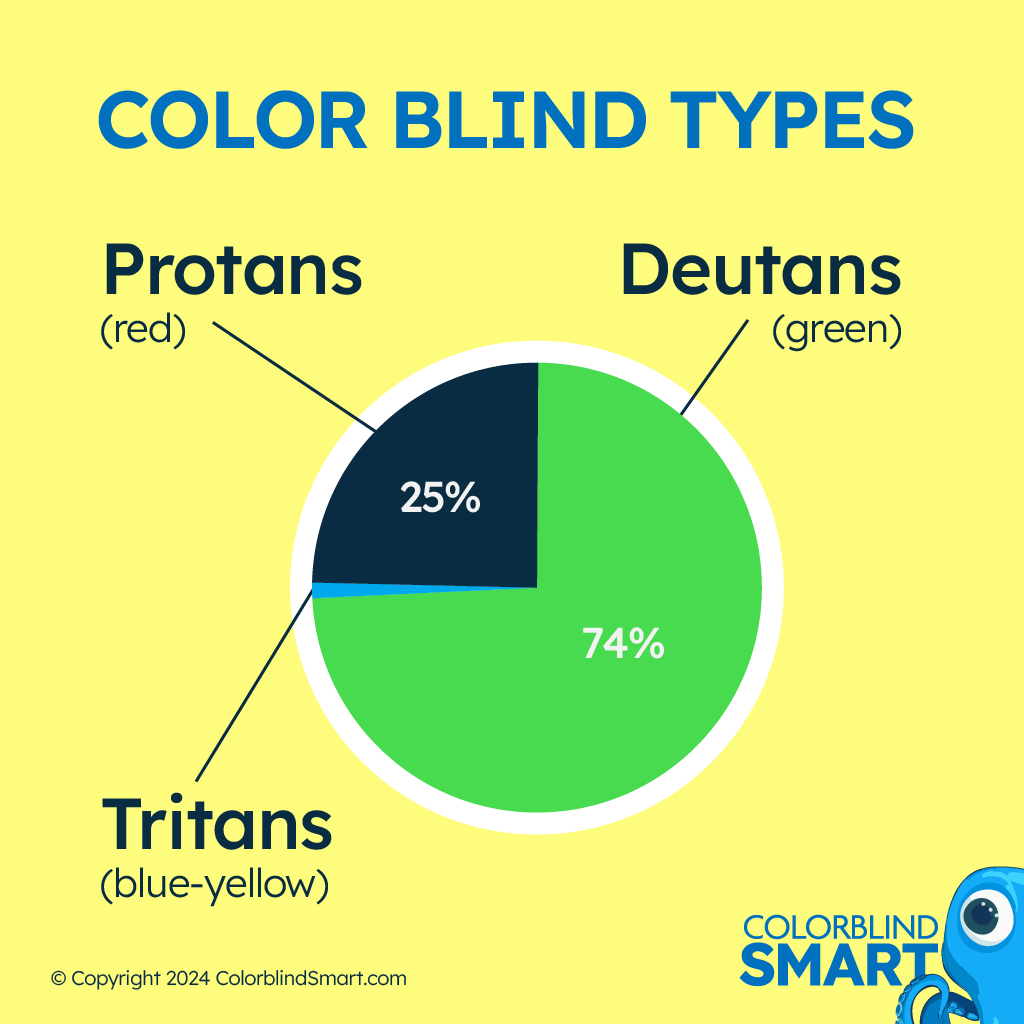
I’m color blind. The scientific label for my green color deficient vision is deuteranomaly. This is the most common type of color blindness. Understanding the inner workings of my vision has radically changed the way I perceive color. Initially, some people think color blindness means “no colors.” But in reality, it’s often about subtle (or not-so-subtle) confusions in the way our cones respond to certain wavelengths of light. By learning how color vision is supposed to function, I discovered new strategies to navigate a color-coded world.
How Color Vision Works
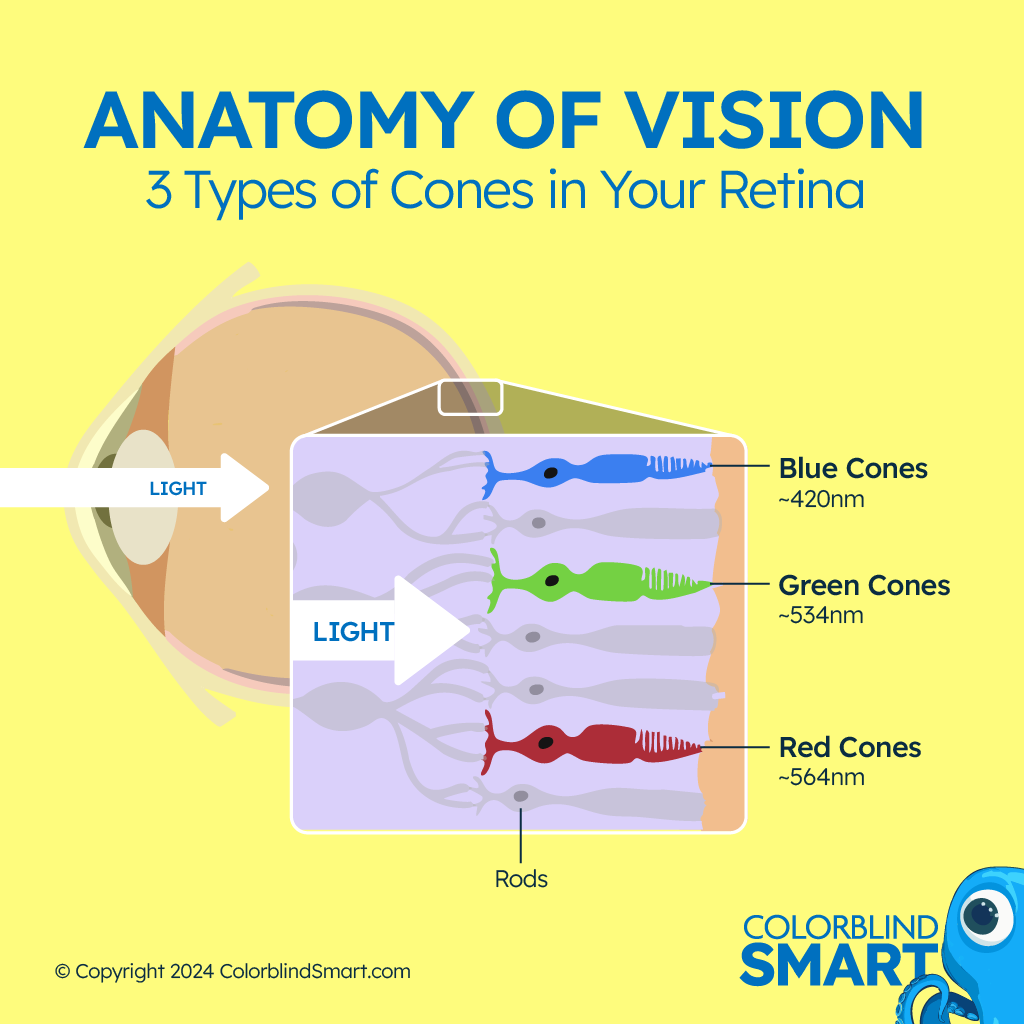
Perceiving color is more complex than just seeing different shades. It’s a mental phenomenon triggered by the wavelength of light entering your eye. Deep in the retina are special receptor cells called cones, which come in three varieties:
- Blue cones: Sensitive to short wavelengths (~420 nm)
- Green cones: Sensitive to medium wavelengths (~534 nm)
- Red cones: Sensitive to long wavelengths (~564 nm)1
When light activates these cones, they send signals to your brain, which merges them to produce the perception of color. Because color is ultimately a brain-based experience, even minor variations in how these cones function can drastically alter how color is perceived.
Color vision deficiency commonly arises from a genetic mutation that causes one type of cone cell to develop abnormally. Let’s dig into the main types of color blindness recognized by vision science.
Red-Green Color Blindness
The largest category, red-green color blindness, affects how we differentiate reds, greens, and colors containing those components. Within this category, two specific subtypes prevail: Deutan (green-weak) and Protan (red-weak). Each subtype can manifest as an anomaly (cones present but malfunctioning) or an anopia (cones reduced in number or absent).
Green Color Blind (Deutan)

Deutan deficiencies involve the green cones. In deuteranomaly (the most common form of color blindness), green cones are present but respond to wavelengths closer to red. This anomaly makes it much harder to separate certain greens and reds, but it also impacts how someone sees oranges, purples, and teals—basically, any hue containing red or green components.
Deuteranopia, on the other hand, implies that green cones are mostly absent or severely diminished. People with deuteranopia experience a more pronounced red-green confusion and may struggle with tasks that rely heavily on color-coding, such as interpreting color-based charts or sorting fruit by ripeness.
Red Color Blind (Protan)
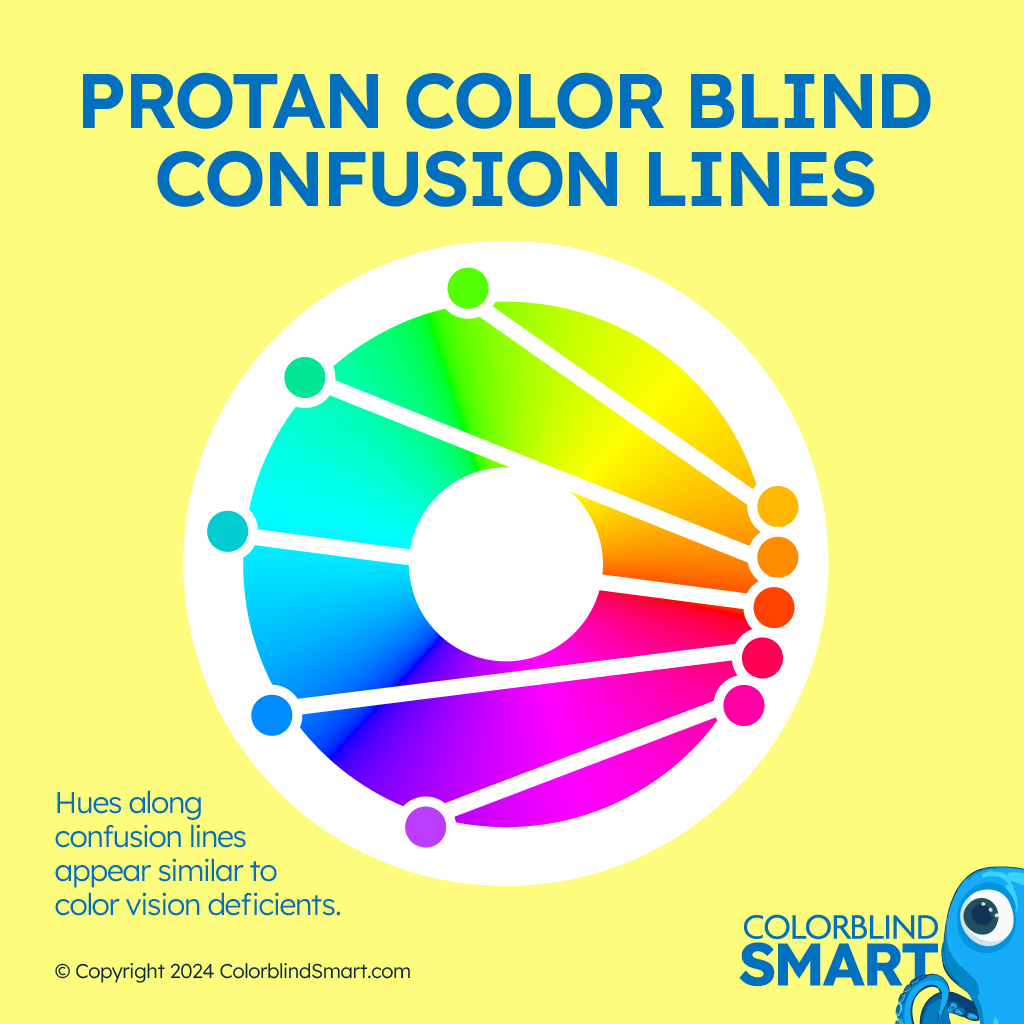
Protan deficiencies involve the red cones. In protanomaly, red cones still function but respond to wavelengths that overlap with the green cones. Similar to deuteranomaly, this results in a noticeable red-green confusion, though some people say reds appear darker in value in addition to being dull.
In protanopia, red cones are largely missing or nonfunctional. These individuals not only see diminished reds, but their ability to distinguish red-based hues (like certain shades of orange or pink) becomes severely compromised.
My Experience with Trichromatic Color Blindness
I have trichromatic color vision (all three cone types exist), yet one cone type is malfunctioning. My green cones interpret wavelengths more like red cones. As a result, I perceive an overlap whenever I see reds or greens. It’s not that I can’t see red or green at all—I mix them up. If I see a bright red apple, part of me also registers green, and if I see green grass, my brain also receives signals for red. This has been a key in my color blindness journey that unlocked a doorway to overcoming color blindness.
(Newsletter signup)
Blue-Yellow Color Blindness (Tritan)
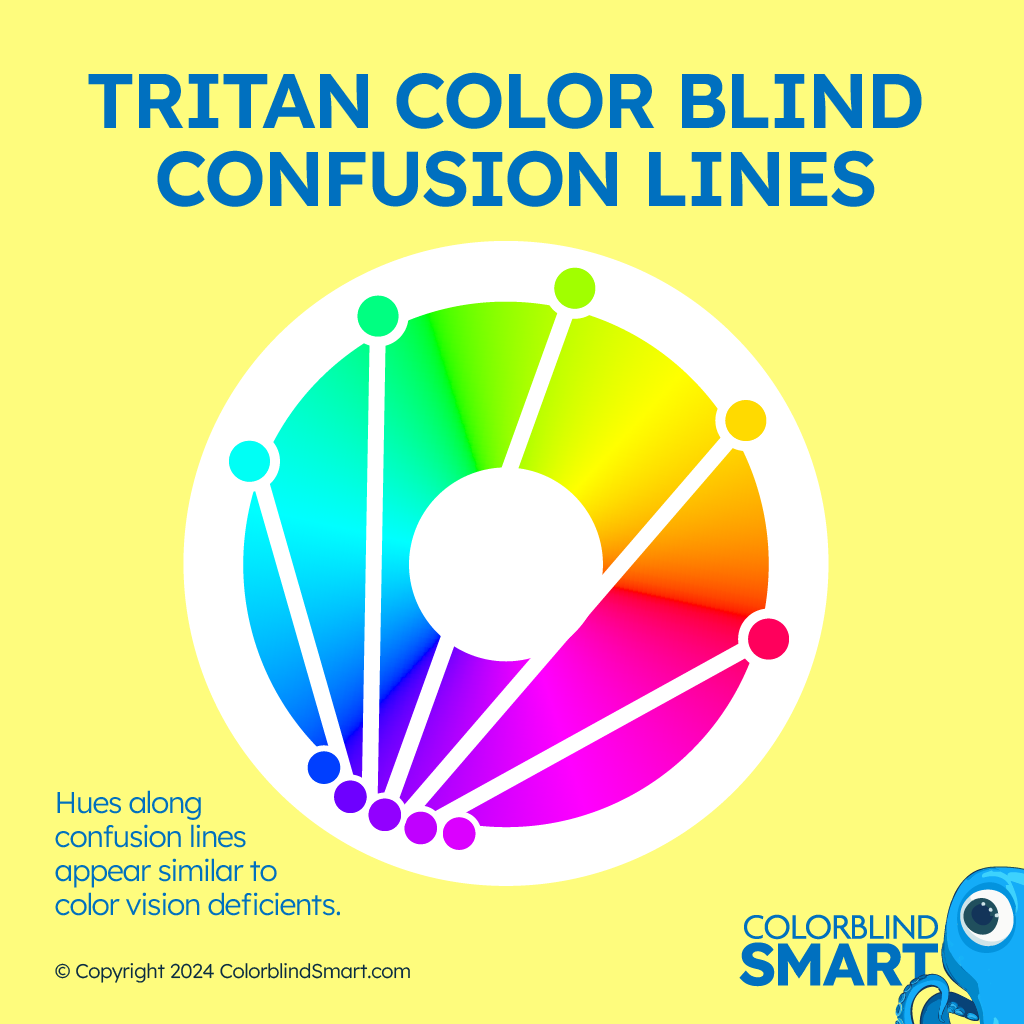
Although significantly less common, blue-yellow color blindness (often called tritan deficiency) affects the short-wavelength (blue) cones in the retina. There are two main types:
1. Tritanomaly: The blue cones function but are not as sensitive to shorter wavelengths as they should be, leading to confusion between blues and greens or difficulties distinguishing yellows from violet hues.
2. Tritanopia: Blue cones are missing or nearly nonfunctional. Individuals might have trouble separating blue from green and yellow from pink.
Blue-yellow deficiencies often appear later in life or result from medical conditions like cataracts or macular degeneration. They’re not typically linked to the same X-chromosome mutations that cause red-green color blindness, so tritan deficiencies affect men and women at closer rates.
Grayscale (Achromatopsia)
At the rarest end of the spectrum, achromatopsia means little to no functioning cone cells at all. People with complete achromatopsia see the world in shades of gray, black, and white, while incomplete achromatopsia may allow partial color perception. Achromatopsia is often accompanied by photophobia (light sensitivity) and significantly reduced visual acuity. This condition can drastically impact everyday life, as color cues are almost entirely absent.
Types of Color Blindness That Don’t Exist
Certain phrases might pop up online, like “blue-purple color blindness” or “pink-white color blindness.” These aren’t recognized categories. People often describe their experience with color confusion by labeling which combinations trip them up—leading to misconceptions that these are standalone diagnoses. In reality, confusion among “blue-purple” or “pink-white” often traces back to an underlying red-green or blue-yellow deficiency.
Here are some labels that might surface but aren’t official types:
- Blue-purple
- Yellow-orange
- Pink-white
- Blue-teal
These descriptors typically reflect how existing deficiencies overlap with specific shades, rather than forming new categories.
Cause of Types of Color Blindness
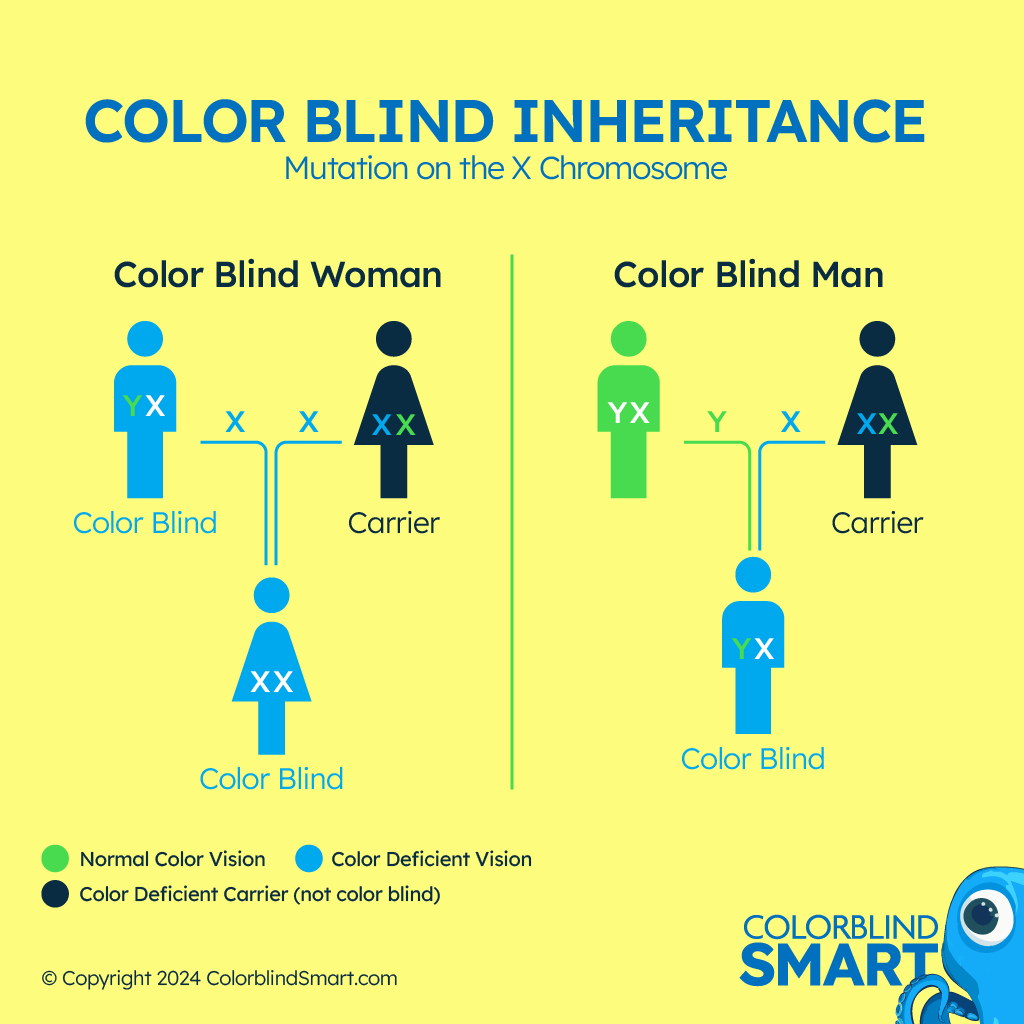
The root cause of most color blindness is genetic. Mutations on the X chromosome dictate how one or more of your cone cell types develop or function. Because men have only one X chromosome (versus two in women), they are statistically more likely to inherit red-green deficiencies. Blue-yellow deficiencies, however, come from different genetic or environmental factors and affect both genders more equally.
Besides genetics, color blindness can occasionally be acquired through:
- Degenerative eye diseases (e.g., macular degeneration, glaucoma)
- Medications that alter retinal function
- Trauma or damage to the retina
- Aging, which naturally decreases the sensitivity of cone cells over time
Living with Color Blindness
Understanding the types of color blindness is beneficial not just for an official diagnosis but for daily life. Each form has its own challenges. If you’re deuteranomalous, like me, everyday tasks might get tricky when you rely on color codes. For instance, reading traffic lights becomes less about color and more about memorizing positions. Matching clothes involves learning which color names correspond to items in your closet.
People with tritan deficiencies may struggle to differentiate the color of the sky from greenish backgrounds or notice the difference between a pink dress and a pale yellow one under certain lighting. Achromats must rely heavily on contrast and brightness cues instead of color. Despite these challenges, most of us adapt by developing alternative strategies and mental systems.
Tools like color detection apps, specialized glasses, or accessibility features on phones and computers can also aid in bridging the gap. While these solutions don’t “fix” the cones, they help interpret the signals more effectively. Researchers are still exploring gene therapy as a potential cure, but nothing is definitively available yet. Until then, knowledge about each type of color blindness empowers us to cope more effectively.
Conclusion
Learning the types of color blindness can be a pivotal step toward adjusting your mindset and refining your coping strategies. Red-green deficiencies (Deutan and Protan) remain the most prevalent, but tritan (blue-yellow) and achromatopsia also impact a significant population. Knowing which cone type is malfunctioning can demystify the condition—making it easier to anticipate which hues might cause trouble.
We might not have a full medical cure on the horizon, but understanding the distinctions, causes, and potential workarounds helps you live confidently in a world saturated with color-coded information. If you suspect you have any form of color blindness, consult an eye care professional for testing. Armed with the right knowledge, you’ll find that color deficiency doesn’t need to limit your life—it simply reshapes how you see the spectrum around you.
References
Footnotes
Last updated: April 04 2025